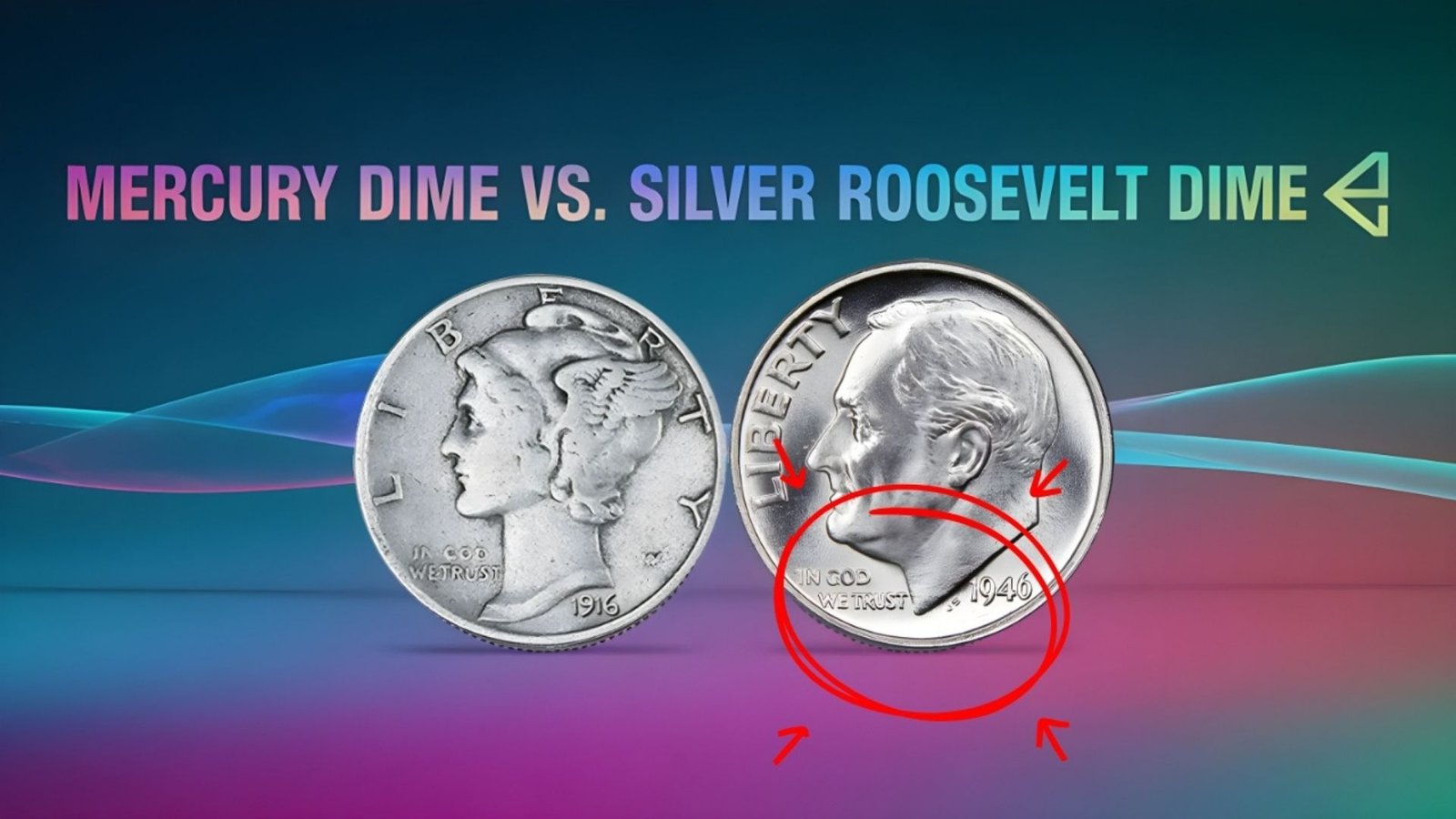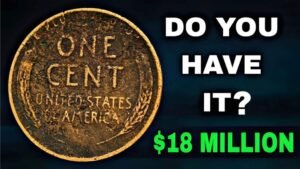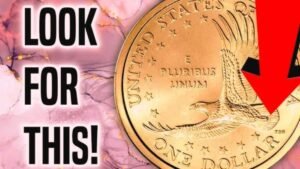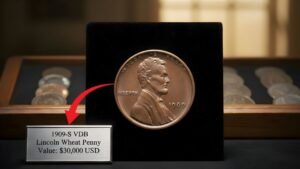If you think a dime is just ten cents, think again. Beneath its small size lies a world of history, artistry, and rare collectibles. From the iconic Mercury Dime to the enduring Roosevelt Dime, these coins have fascinated collectors for decades. Discover the differences, hidden values, and secrets that make America’s smallest coin so captivating.
What Are Roosevelt and Mercury Dimes?
The Mercury Dime, minted from 1916 to 1945, features Liberty wearing a winged cap and is revered for its intricate design. The Roosevelt Dime, introduced in 1946, honors President Franklin D. Roosevelt and has become a staple of everyday currency. Both coins are ten-cent pieces but differ in design, history, and collectible appeal.
History and Background of Mercury Dimes
Designed by Adolph A. Weinman, the Mercury Dime represents freedom of thought. Minted during World War I and II, it contains 90% silver, making it valuable for both collectors and investors. The coin’s delicate artistry and low-mintage years, such as 1916-D, make it a prized item today.
History and Background of Roosevelt Dimes
The Roosevelt Dime was introduced shortly after FDR’s death in 1945 to honor his leadership and efforts in founding the March of Dimes campaign. While the composition changed over time from 90% silver to copper-nickel, the coin remains a mainstay in circulation and collecting circles.
Why These Dimes Are Important Today
Both coins have significance beyond face value. Mercury Dimes hold historical and silver value, while Roosevelt Dimes commemorate a beloved president and some early silver versions are highly collectible. Investors and hobbyists alike seek them for rarity, condition, and historical importance.
Key Differences Between Mercury and Roosevelt Dimes
| Feature | Mercury Dime | Roosevelt Dime |
|---|---|---|
| Mint Years | 1916–1945 | 1946–present |
| Composition | 90% Silver | 90% Silver (1946–1964), Copper-Nickel (1965–present) |
| Designer | Adolph A. Weinman | John R. Sinnock |
| Obverse Design | Liberty with winged cap | Franklin D. Roosevelt |
| Collectible Highlights | 1916-D, low mintage years | 1946–1964 silver issues, errors |
| Face Value | $0.10 | $0.10 |
Notable Facts About These Dimes
- The 1916-D Mercury Dime is considered one of the rarest dimes, with a high collector premium.
- Early Roosevelt Dimes (1946–1964) are 90% silver, giving them intrinsic bullion value.
- Both coins have varieties and errors, including doubled dies and mint mark anomalies, which significantly increase their value.
Tips to Spot Valuable Mercury and Roosevelt Dimes
- Check Mintmarks Carefully — Denver (D), Philadelphia (no mark), and San Francisco (S) coins can affect rarity.
- Look for Condition — Coins in higher grades, especially uncirculated or proof versions, command premiums.
- Identify Key Dates — 1916-D (Mercury) and 1949-S (Roosevelt) are particularly sought after.
- Consider Silver Content — For investors, pre-1965 coins are 90% silver, adding bullion value.
Collectible Values and Tips
| Coin Type | Key Dates / Errors | Estimated Collector Value |
|---|---|---|
| Mercury Dime | 1916-D, 1921, 1942/1 | $100–$50,000+ |
| Roosevelt Dime | 1946, 1949-S, 1960-D | $10–$5,000+ |
FAQs
Q: Are all Mercury and Roosevelt Dimes valuable?
A: No, common circulated dimes hold face value, but rare dates, mint errors, and silver content increase worth.
Q: How can I determine the value of my dimes?
A: Check mintmarks, dates, condition, and consider professional grading from PCGS or NGC.
Q: Can I find Mercury Dimes in circulation?
A: Rarely; most have been removed for their silver content or preserved by collectors.
Conclusion: Small Coins, Big History
The Mercury and Roosevelt Dimes offer more than ten cents’ worth of intrigue. From the historic artistry of Mercury Dimes to the commemorative significance of Roosevelt Dimes, these small coins tell rich stories and hold hidden value. Whether you’re a collector, investor, or casual hobbyist, a closer look could reveal a miniature treasure in your pocket.




